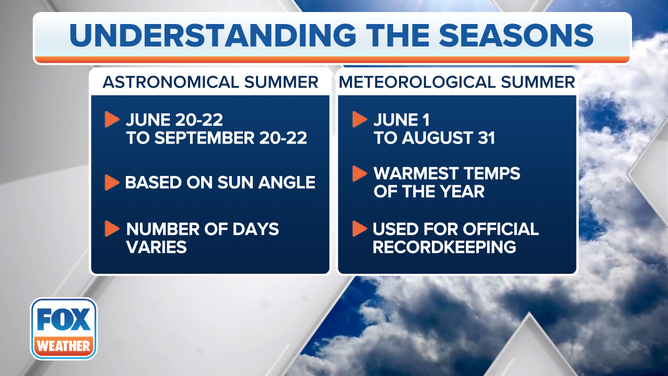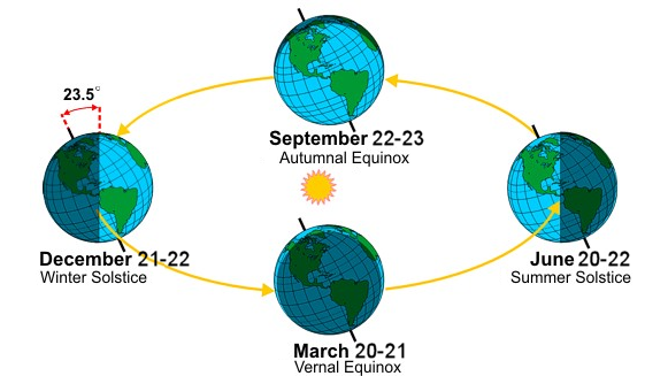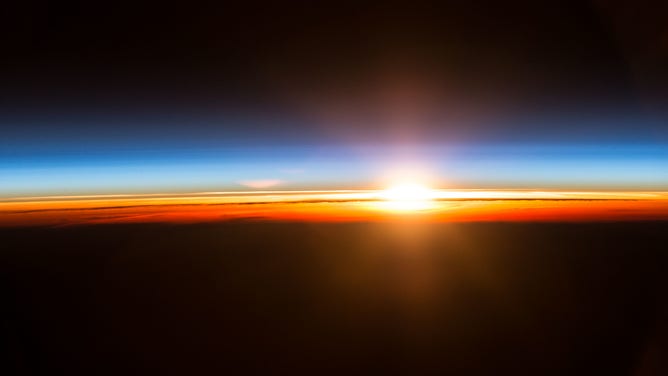First day of summer is June 20: The science behind the summer solstice
In 2025, the summer solstice occurs June 20 at 10:42 p.m. EDT, marking the official start of summer in the Northern Hemisphere. Here's how astronomers come up with that precise time.
See the National Parks to visit over the summer
Explore America's national treasures with adventurer Abby Hornacek as she tours the best sites across the country.
Summer officially begins in the Northern Hemisphere on June 20 with the summer solstice, the day with the greatest amount of possible daylight and the shortest night.
For ease of recordkeeping, meteorologists and climatologists consider June 1 the first day of summer, but astronomically speaking, the Tropic of Cancer (23.5 degrees north latitude) is aligned directly with the Sun on the summer solstice. In 2025, that occurs on June 20 at 10:42 p.m. EDT.

The start of summer depends on whether you're referring to the astronomical or the meteorological start.
(FOX Weather)
Astronomical seasons are based on the position of the Earth with respect to the Sun as the planet makes its annual revolution around this closest star.
The Earth is tilted approximately 23.5 degrees off a vertical axis, and because of this tilt, the most direct sunlight is aimed at the Northern Hemisphere during our astronomical summer and at the Southern Hemisphere during our astronomical winter.
HOW DO ALASKANS COPE WITH NEARLY ALL-NIGHT DAYLIGHT IN SUMMER?

The Earth's orbit around the sun gives our planet its four seasons.
(NOAA)
The two solstices and two equinoxes are simply precise moments in time when the Sun is in direct alignment with three distinct bands of latitude.
Their dates can vary by a day or two each year since it takes the Earth 365 days and 6 hours (365.25 days) to make one full revolution around the sun, which is why we have a leap year every four years.
On the summer solstice in June, the sun's most direct rays are positioned over the Tropic of Cancer (23.5 degrees north latitude), while on December's winter solstice, the most direct rays of sunlight are in alignment with the Tropic of Capricorn (23.5 degrees south latitude).
HOW OFTEN DO TEMPERATURES HIT 100 DEGREES IN MAJOR U.S. CITIES?
On the autumnal equinox in September and the vernal (spring) equinox in March, the equator (0 degrees latitude) is aligned directly with the sun. Therefore, everywhere on Earth experiences an equal 12 hours of day and night because the sun rises due east and sets due west.

Sunrise is photographed aboard the International Space Station, one of the sixteen that can be seen from the orbiting laboratory every day.
(NASA)
In the summer, the Sun rises in the northeastern sky and sets in the northwestern sky, providing long days and short nights. The Sun reaches its highest and northernmost point in the sky at solar noon (around 1 p.m. local time due to daylight saving time) on the summer solstice. This provides the most direct solar radiation of the year, resulting in more heating of the Earth’s surface and, therefore, warmer temperatures.
WHY ARE EARLIEST SUNRISES A WEEK OR MORE BEFORE THE SUMMER SOLSTICE?
In the winter, the sunrise is in the southeastern sky and the sunset is in the southwestern sky – a much shorter path across the Northern Hemisphere sky – so days are short and nights are long. The solar-noon Sun angle is the lowest and farthest south in the sky on the winter solstice. This means we have the least direct solar radiation of the year on the first day of winter, resulting in colder temperatures because there’s less heating of the Earth’s surface.
HOW THE WEATHER YOU'RE ACCUSTOMED TO AFFECTS NATIONAL WEATHER SERVICE HEAT WARNINGS, ADVISORIES
Interestingly, the Earth’s orbit around the Sun is elliptical (not perfectly circular), so our planet is actually farthest from the Sun in July, known as aphelion, during the Northern Hemisphere summer and closest to the Sun in January, known as perihelion, during the Northern Hemisphere winter.
